Don't wanna be here? Send us removal request.
Text
Quantum Computing & Python: What Developers Need to Know
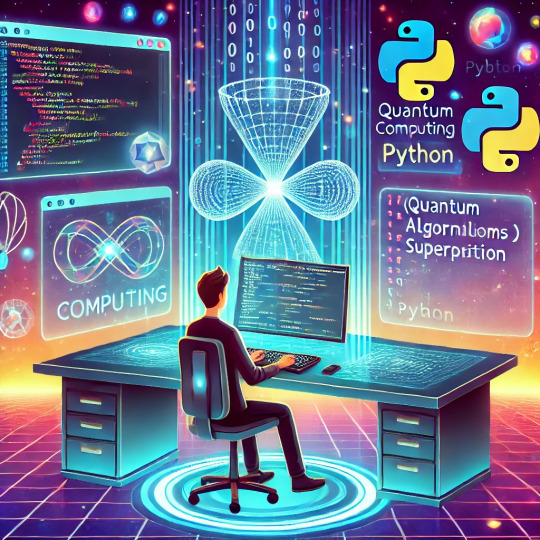
Quantum computing is one of the most exciting frontiers in technology, promising to revolutionize industries by solving problems that are currently impossible for classical computers. Python, being a versatile and widely used programming language, has become the go-to tool for quantum computing simulations and research. In this blog, we’ll explore the fundamentals of quantum computing, how Python fits into the ecosystem, and what developers should know to get started.
Understanding Quantum Computing Basics
Unlike classical computers that use bits (0s and 1s), quantum computers use qubits, which leverage the principles of superposition and entanglement to process information in fundamentally different ways. This allows quantum computers to perform calculations exponentially faster for specific tasks like cryptography, optimization, and complex simulations.
Superposition – A qubit can exist in multiple states (0 and 1) simultaneously, enabling parallel computations.
Entanglement – Qubits can be interconnected, meaning the state of one qubit can instantly influence another, even over vast distances.
Quantum Gates – Instead of traditional logic gates, quantum computing relies on quantum gates that manipulate qubits in unique ways.
Python’s Role in Quantum Computing
Python plays a crucial role in quantum computing, providing user-friendly libraries and frameworks for quantum programming. Here are some of the most popular quantum computing libraries in Python:
Qiskit (by IBM) – A powerful open-source framework for working with quantum computers and simulators.
Cirq (by Google) – Focuses on building, simulating, and running quantum circuits.
PennyLane (by Xanadu) – An advanced library for quantum machine learning.
QuTiP – Designed for quantum physics simulations.
Getting Started with Quantum Computing in Python
If you’re a Python developer looking to explore quantum computing, follow these steps:
Install Qiskit – pip install qiskit
Create a Simple Quantum Circuit
from qiskit import QuantumCircuit circuit = QuantumCircuit(2) circuit.h(0) # Apply Hadamard gate circuit.cx(0, 1) # Apply CNOT gate print(circuit)
Run on a Simulator or Real Quantum Computer – IBM provides free cloud access to quantum computers via IBM Quantum Experience.
Future of Quantum Computing
Quantum computing is still in its early stages, but its potential impact is vast. Fields like cryptography, AI, drug discovery, and climate modeling stand to benefit immensely. As quantum hardware advances, Python developers equipped with quantum programming skills will be in high demand.
Conclusion
Quantum computing is no longer just theoretical—it’s becoming an essential technology for the future. Python developers interested in innovation should start exploring quantum programming today. With tools like Qiskit and Cirq, diving into quantum computing has never been easier. Stay ahead of the curve and be part of the quantum revolution!
Python Training In Chennai
Python Course In Chennai
0 notes
Text
Kick Start your Career: Become A Full Stack Development Course
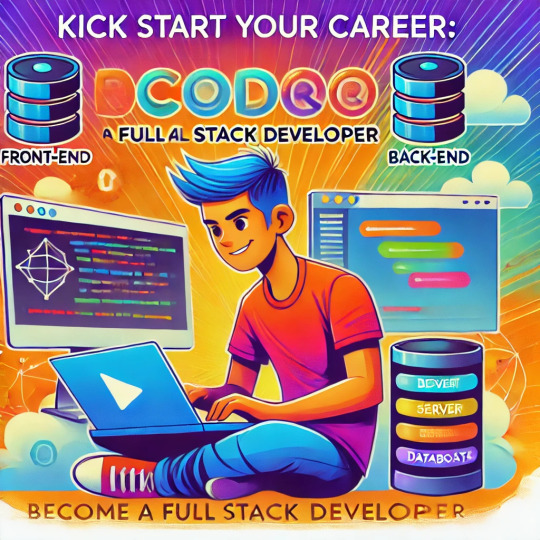
Are you looking to become a skilled full stack developer? Code from Basics offers a top-notch Full Stack Developer Course in Chennai, designed to equip you with the essential skills required to build complete web applications from scratch. Whether you are a beginner or an experienced professional looking to upskill, this course is the perfect opportunity to dive deep into full stack development.
Why Choose Our Full Stack Developer Course?
Comprehensive Curriculum - Learn front-end, back-end, databases, and deployment, ensuring you master both client-side and server-side development.
Expert Trainers - Get trained by industry professionals with real-world experience in full stack development.
Hands-on Learning - Work on live projects, assignments, and interactive coding exercises to build real-world applications.
Certification - Earn a recognized certificate upon successful completion of the course.
Placement Assistance - Get job support and guidance to start a successful career in full stack development.
Course Syllabus Overview
Our Full Stack Developer Course in Chennai covers the following topics:
1. Front-end Development:
HTML, CSS, JavaScript - Basics to Advanced
Bootstrap, Tailwind CSS for responsive design
React.js - Components, Props, State Management, Hooks
2. Back-end Development:
Node.js and Express.js for server-side development
REST API development and integration
Authentication and Authorization (JWT, OAuth)
3. Database Management:
MySQL and MongoDB fundamentals
CRUD Operations, Data Modeling
ORM frameworks like Mongoose and Sequelize
4. Version Control & Deployment:
Git and GitHub for version control
Hosting and Deployment (AWS, Firebase, Heroku)
5. Final Capstone Project:
Develop a full-fledged web application integrating front-end, back-end, and database technologies.
Who Can Join?
Students and graduates aspiring to build a career in web development.
Professionals looking to switch careers into full stack development.
Entrepreneurs aiming to develop their own web applications.
Career Opportunities After Completion
After completing the Full Stack Developer Course at Code from Basics, you can apply for roles such as:
Full Stack Developer
Front-end Developer
Back-end Developer
Web Application Developer
Enroll Today!
Join our Full Stack Developer Course in Chennai and take the first step toward a high-paying tech career. Gain practical experience, build a strong portfolio, and become job-ready in just a few months.
Full stack development training in chennai
Full stack development course in chennai
Full stack training in chennai
0 notes
Text
Is Azure Data Engineering Certification Worth It in 2025?
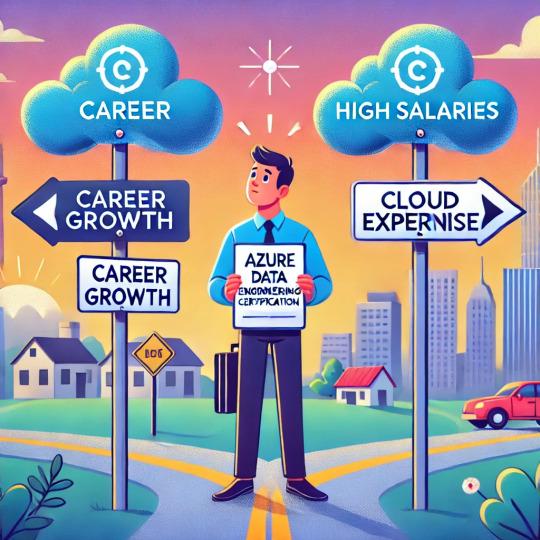
In 2025, data continues to be the lifeblood of digital transformation, driving business decisions and innovation across industries. Among the many roles in the data ecosystem, Azure Data Engineers are in high demand. But is pursuing an Azure Data Engineering certification worth it in 2025? Let’s explore its value from career, industry, and practical perspectives.
Growing Demand for Data Engineers
With the exponential growth of cloud adoption, businesses are increasingly turning to platforms like Microsoft Azure to manage their data needs. Azure offers scalable and secure tools that cater to diverse data engineering requirements, making it a top choice for enterprises. This has created a surge in demand for skilled professionals who can design and implement data solutions on Azure. Certification provides formal recognition of your skills, making you a competitive candidate in a crowded job market.
According to recent industry reports, data engineering is one of the fastest-growing tech roles. Companies seek professionals with validated expertise in Azure tools such as Azure Data Factory, Azure Synapse Analytics, and Azure Databricks. Certification signals your ability to handle these tools effectively.
Career Benefits of Certification
Higher Salaries: Certified Azure Data Engineers typically earn higher salaries compared to their non-certified counterparts. The certification showcases your expertise, justifying a premium in pay.
Career Advancement: Certification can act as a stepping stone to senior roles like Data Architect or Cloud Engineer. It demonstrates your commitment to continuous learning and positions you for leadership opportunities.
Global Recognition: Microsoft certifications are globally recognized, allowing you to explore opportunities beyond your current region or country.
What the Certification Covers
The Azure Data Engineering certification focuses on essential skills such as:
Designing and implementing data storage solutions.
Building data pipelines and workflows.
Ensuring data security and compliance.
Optimizing and monitoring data solutions for performance and cost.
These competencies align with the practical challenges data engineers face daily, ensuring that certified professionals are job-ready.
Trends Making Certification Relevant in 2025
AI and Machine Learning Integration: Azure’s data tools increasingly integrate with AI and machine learning solutions, making it vital for data engineers to stay updated.
Edge Computing and IoT: With the rise of edge computing and IoT, the demand for engineers capable of handling distributed data systems is on the rise.
Cloud-Native Architectures: Businesses are prioritizing cloud-native architectures, and Azure’s suite of services offers robust solutions for modern data challenges.
Is It Worth the Investment?
Cost vs. Return: The cost of the Azure Data Engineering certification ranges between $150 and $300 per exam, plus any preparation materials or courses. However, the return on investment is significant, with certified professionals often earning 20-30% more annually.
Time Commitment: Preparation typically requires 2-4 months of dedicated study, depending on your prior experience. For professionals already in the field, the certification process enhances existing skills.
Future-Proofing Your Career: In a rapidly evolving tech landscape, staying certified ensures your skills remain relevant and competitive.
Conclusion
In 2025, the Azure Data Engineering certification is undoubtedly worth the investment. It not only validates your expertise but also opens doors to exciting career opportunities, higher salaries, and global recognition. As businesses increasingly rely on data to drive decision-making, certified Azure Data Engineers will continue to play a pivotal role in shaping the future. If you’re ready to take your career to the next level, the Azure Data Engineering certification could be the key to unlocking your potential.
Data Engineering Training In Chennai
Data Engineering Course In Chennai
Azure Data Engineering Training In Chennai
Azure Training In Chennai
0 notes
Text
Top Java Trends to Watch in 2025: What's New and What's Next?
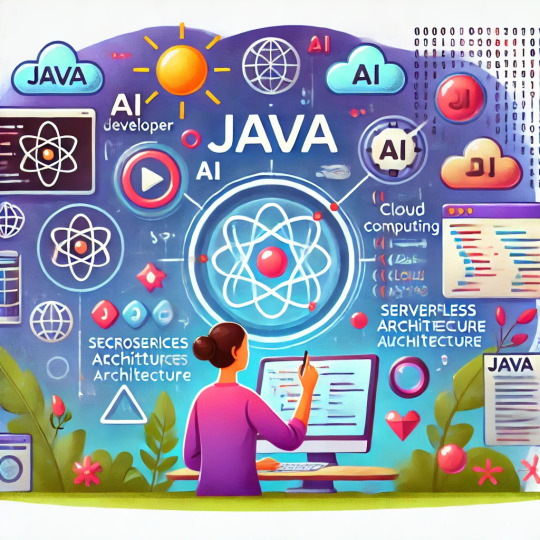
Java has been one of the most popular programming languages for over two decades, and in 2025, it continues to hold its ground in the tech world. With new updates, evolving frameworks, and emerging technologies, Java is poised for further growth. As we look ahead, here are the top Java trends to watch in 2025.
1. The Rise of Java 21 and New Language Features
Java 21, released in late 2024, brings a variety of new features and improvements that will shape Java development in 2025. Some key updates include:
Pattern Matching Enhancements: Java's pattern matching continues to evolve, making it easier for developers to write clean and efficient code. The release introduces more powerful patterns for type matching and conditional expressions.
Virtual Threads: Java 21 includes improvements to the Project Loom, which enhances concurrency by introducing lightweight virtual threads. This is a significant shift from traditional thread models, allowing Java developers to handle millions of concurrent tasks with minimal overhead, perfect for building scalable, high-performance applications.
Project Panama: This project aims to improve the connection between Java and native code, offering better interoperability with non-Java languages. Java 21 has made strides in this area, making it easier to integrate Java with native libraries for performance-critical applications.
As more organizations adopt Java 21, these features will help streamline development and improve application performance.
2. Java and AI Integration
Artificial intelligence is increasingly becoming an integral part of software development. In 2025, Java is expected to see greater integration with AI and machine learning tools. Java developers can look forward to enhanced libraries and frameworks such as:
Deep Java Library (DJL): DJL is a framework built for developing deep learning applications in Java. In 2025, it will likely see more widespread adoption, enabling developers to build AI-powered applications directly in Java.
TensorFlow and Java: TensorFlow, one of the most popular open-source machine learning frameworks, already supports Java, but new tools and better integration are expected in 2025. This allows Java developers to leverage AI capabilities without having to switch to Python.
Java's robust performance and security features make it an ideal choice for implementing AI and machine learning models at scale.
3. Java in the Cloud: The Future of Cloud-Native Development
The shift towards cloud-native development is another trend to watch in 2025. Java is already a go-to language for cloud applications, and with the rise of platforms like Kubernetes and Docker, its role is only growing. Java developers are increasingly utilizing:
Quarkus and Micronaut: These frameworks provide a more lightweight, cloud-native approach to Java development. Quarkus, for instance, optimizes Java for Kubernetes and serverless environments, drastically reducing startup times and memory consumption, which is perfect for cloud deployments.
Java in Serverless Architectures: Serverless computing is gaining momentum, and Java is evolving to fit these serverless paradigms. Cloud providers like AWS and Google Cloud Platform now offer better support for running Java applications in a serverless environment, allowing for automatic scaling and improved cost efficiency.
4. Java for Mobile and Web Development
While Java has long been the preferred language for Android development, its role in mobile development is evolving. The introduction of Jetpack Compose for Android allows developers to build modern UIs using Kotlin and Java together, streamlining the app development process.
On the web front, Java remains crucial for building enterprise-level web applications. With the rise of frameworks like Spring Boot and Vaadin, Java is well-suited for creating responsive, scalable, and secure web applications. Expect more developments in these areas as the demand for high-performance, enterprise-grade applications grows.
5. Java Security Advancements
As cyber threats evolve, so must security protocols. Java's security features are constantly improving, and 2025 will likely see even stronger measures to protect applications. New security enhancements, like Java Security Manager improvements and better integration with cloud security frameworks, will give developers the tools they need to ensure their applications are safe from vulnerabilities.
6. Java's Growing Role in Blockchain and IoT
Blockchain and Internet of Things (IoT) technologies are making waves in the tech world, and Java is becoming an important player in both fields. With its strong support for concurrency and network communication, Java is increasingly being used in blockchain development. Java's Hyperledger Fabric project is a prime example, allowing developers to build secure, scalable blockchain solutions.
For IoT, Java's lightweight frameworks such as Eclipse IoT provide the tools needed to build and manage devices securely, making it the preferred choice for IoT applications.
7. Java and Developer Productivity Tools
In 2025, Java developers will continue to benefit from a range of tools aimed at improving productivity. Tools like IntelliJ IDEA, Visual Studio Code, and JRebel are already popular, but expect more automation and integrations to streamline coding, testing, and deployment. Continuous integration and deployment (CI/CD) pipelines, along with cloud-based development environments, will help Java developers focus more on innovation and less on repetitive tasks.
Conclusion
Java continues to be a dominant force in the software development world, and in 2025, it is poised to maintain its position with new innovations and improvements. From AI integration and cloud-native development to enhanced concurrency and security, Java remains an essential tool for developers. As new trends emerge, Java developers must stay updated to leverage these advancements and remain at the forefront of the industry.
For Java enthusiasts, 2025 promises to be an exciting year with endless possibilities. Whether you're building enterprise-level applications, experimenting with AI, or diving into cloud-native development, Java will remain a key player in the ever-evolving tech landscape.
Java training in chennai
Java course in chennai
0 notes
Text
Master Python Programming with Code from Basics
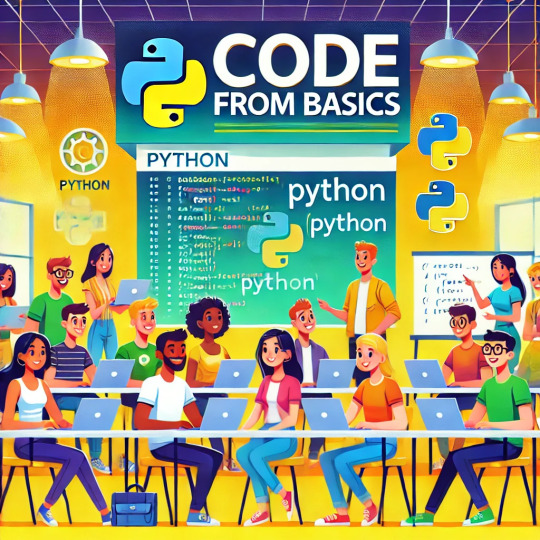
In today’s fast-paced tech-driven world, learning a versatile and powerful programming language like Python is not just an option; it’s a necessity. Python has emerged as the go-to language for beginners and professionals alike, thanks to its simplicity, readability, and vast application range. At Code from Basics, we offer a well-structured Python course designed to take you from a novice to a confident programmer.
Why Choose Python?
Python is one of the most in-demand programming languages globally, and for a good reason:
Ease of Learning: Python’s syntax is simple and intuitive, making it ideal for beginners.
Versatility: From web development and data analysis to artificial intelligence and machine learning, Python is used in diverse fields.
Community Support: With a vast community of developers, finding help and resources is always easy.
Career Opportunities: Python skills can unlock lucrative career paths in software development, data science, automation, and more.
What You’ll Learn in Our Python Course
Our Python course is meticulously crafted to cater to all levels of learners, from absolute beginners to those with some programming experience. Here’s what you can expect:
1. Python Fundamentals
Understanding Python syntax and structure.
Variables, data types, and operators.
Writing your first Python program.
2. Control Structures
Decision-making with if-else statements.
Looping constructs: for and while loops.
3. Functions and Modules
Creating reusable code with functions.
Importing and using Python modules.
4. Object-Oriented Programming
Classes and objects.
Inheritance, encapsulation, and polymorphism.
5. File Handling
Reading from and writing to files.
Handling errors and exceptions.
6. Data Structures and Libraries
Lists, tuples, sets, and dictionaries.
An introduction to popular libraries like NumPy and pandas for data manipulation.
7. Project-Based Learning
Develop real-world projects to apply your skills.
Hands-on practice with coding challenges and assignments.
Why Code from Basics?
Experienced Instructors: Learn from industry experts with years of teaching and practical experience.
Flexible Learning Options: Choose between online and offline classes at your convenience.
Certification: Receive a certificate of completion to boost your resume.
Affordable Fees: High-quality education at an affordable cost.
Dedicated Support: Get access to 24/7 support to resolve your queries.
Who Can Join?
Our Python course is perfect for:
Beginners with no programming background.
Students and professionals looking to upskill.
Anyone interested in transitioning to tech-driven roles.
Enroll Today!
Don’t miss the opportunity to become proficient in Python and open doors to exciting career opportunities. Join Code from Basics Python Course today and start your journey towards becoming a skilled programmer.
Python training in Chennai
Python course in chennai
Python developing course in chennai
Python course for beginners
#python course in chennai#python training in chennai#python developer#code from basics#online courses
0 notes
Text
Understanding Python Data Types with Real-World Examples

Python, known for its simplicity and versatility, is a favorite among beginners and professionals alike. One of the first steps to mastering Python is understanding its data types. These are the building blocks of Python programming, and they allow us to perform various operations seamlessly. Let’s dive into Python’s core data types and explore them with practical, real-world examples.
1. Numeric Data Types
Python provides three primary numeric types: int, float, and complex.
Integers (int): Whole numbers like 42 or -7. Example: Counting items in a shopping cart.
item_count = 5 print(f"You have {item_count} items in your cart.")
Floats: Numbers with decimal points like 3.14. Example: Calculating the total cost of items.
item_price = 12.99 quantity = 2 total_cost = item_price * quantity print(f"Total cost: ${total_cost}")
Complex Numbers: Used in advanced mathematical computations (e.g., 3+4j).
2. Text Data Type (str)
Strings in Python are sequences of characters, enclosed in quotes. They’re ideal for handling textual data.
Example: Creating a welcome message for a user.username = "John" print(f"Welcome, {username}!")
3. Boolean Data Type (bool)
Booleans represent True or False values. They’re often used in decision-making.
Example: Checking if a user is logged in.is_logged_in = True if is_logged_in: print("You can access your account.") else: print("Please log in first.")
4. Sequence Types
Lists
Lists are mutable sequences, making them perfect for storing collections of items.
Example: Managing a to-do list.todo_list = ["Buy groceries", "Call mom", "Finish project"] todo_list.append("Exercise") print(todo_list)
Tuples
Tuples are immutable sequences, ideal for fixed data sets.
Example: Storing coordinates.coordinates = (40.7128, -74.0060) # Latitude and Longitude print(f"Location: {coordinates}")
Strings (str)
Strings, although immutable, are considered sequence types since you can index and slice them.
5. Mapping Type (dict)
Dictionaries store data in key-value pairs, making them excellent for scenarios where you need fast lookups.
Example: Representing a product in an e-commerce store.product = { "name": "Laptop", "price": 799.99, "in_stock": True } print(product["name"], "- $", product["price"])
6. Set Types
Sets are unordered collections of unique items.
Example: Finding unique items in a list.items = ["apple", "banana", "apple", "orange"] unique_items = set(items) print(unique_items)
7. NoneType
The special None value represents the absence of a value.
Example: Initializing a variable.response = None if response is None: print("Waiting for response...")
Conclusion
Understanding Python data types is fundamental for writing efficient and bug-free code. With real-world examples, you can relate these data types to everyday programming tasks. Master these concepts, and you’ll be well on your way to Python proficiency!
Python training in chennai
Python course in chennai
Best python training institute in chennai
python online course in chennai
0 notes
Text
How to Transition to a Full Stack Developer Role
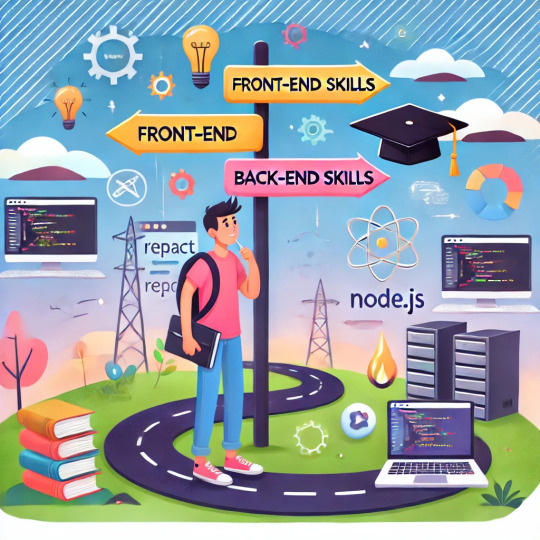
The tech industry is evolving rapidly, and Full Stack development has become one of the most sought-after career paths. Full Stack developers possess the unique ability to work on both front-end and back-end systems, making them invaluable assets to any development team. If you're considering transitioning into this dynamic role, this guide will help you understand the steps, skills, and strategies necessary to succeed.
1. Understand What Full Stack Development Entails
Before diving in, it’s crucial to understand the role. Full Stack developers are responsible for both the client-facing side (front-end) and the server-side (back-end) of web applications. This means proficiency in multiple technologies and tools, including:
Front-End: HTML, CSS, JavaScript, and frameworks like React or Angular.
Back-End: Node.js, Python, Ruby, or Java, along with databases such as MongoDB or MySQL.
Version Control: Git and GitHub.
DevOps: Familiarity with deployment pipelines and cloud services.
2. Assess Your Current Skills
Evaluate your existing skill set and identify gaps. For example, if you're already a front-end developer, focus on learning server-side technologies. Conversely, back-end developers should enhance their knowledge of front-end frameworks and design principles.
3. Learn Core Technologies
Begin by mastering core Full Stack technologies. Here’s a roadmap:
HTML, CSS, and JavaScript: These are the building blocks of web development.
A Front-End Framework: Learn a framework like React, Angular, or Vue.js for building dynamic user interfaces.
Back-End Programming: Choose a language such as Python (Django/Flask), JavaScript (Node.js/Express), or PHP (Laravel).
Databases: Understand relational databases (MySQL/PostgreSQL) and NoSQL options (MongoDB).
Version Control: Get hands-on experience with Git.
RESTful APIs: Learn how to design and integrate APIs.
4. Build Projects
Apply what you’ve learned by building real-world projects. Examples include:
A to-do list app (focus on CRUD operations).
A blog platform with user authentication.
An e-commerce website with a payment gateway.
These projects showcase your abilities to potential employers and help solidify your knowledge.
5. Enroll in Structured Learning Programs
Consider enrolling in online courses or bootcamps. Platforms like Coursera, Udemy, and Codecademy offer comprehensive Full Stack programs. Alternatively, many bootcamps provide hands-on training, mentoring, and job placement support.
6. Gain Practical Experience
Seek internships, freelance projects, or contribute to open-source projects. Practical experience not only hones your skills but also builds your portfolio.
7. Network and Join Communities
Networking is essential in any career transition. Join developer communities on platforms like GitHub, Stack Overflow, and Reddit. Attend meetups, webinars, and hackathons to connect with like-minded professionals and stay updated on industry trends.
8. Prepare for Interviews
Brush up on coding challenges and system design questions. Platforms like LeetCode, HackerRank, and CodeSignal can help you practice. Be ready to demonstrate your knowledge of both front-end and back-end technologies.
9. Stay Updated
The tech landscape changes constantly. Stay ahead by:
Following tech blogs and podcasts.
Experimenting with emerging tools and frameworks.
Engaging in continuous learning.
10. Highlight Your Transition
When applying for roles, emphasize your journey in your resume and portfolio. Showcase your projects, certifications, and the steps you’ve taken to become a Full Stack developer.
Conclusion
Transitioning to a Full Stack developer role requires dedication, continuous learning, and hands-on experience. By understanding the demands of the role, acquiring the right skills, and building a robust portfolio, you can position yourself as a competitive candidate in the job market. Start your journey today, and unlock a world of opportunities in the ever-growing field of Full Stack development.
Full stack developer training in chennai
Full stack course in chennai
Full stack training in chennai
0 notes
Text
Common Java Interview Questions and How to Answer Them

Java remains one of the most popular programming languages, especially in enterprise applications. If you’re preparing for a Java-related interview, it’s crucial to not only understand the technical aspects of the language but also how to present your knowledge effectively. Below, we’ve compiled some common Java interview questions and tips on how to answer them confidently.
1. What is the difference between JDK, JRE, and JVM?
Answer: This is one of the most basic but important questions. Here’s a succinct way to explain it:
JDK (Java Development Kit): A complete package for developing Java applications, including tools for compiling, debugging, and running programs.
JRE (Java Runtime Environment): It provides libraries, Java Virtual Machine (JVM), and other components to run Java applications but doesn't include development tools.
JVM (Java Virtual Machine): The engine that runs Java applications, converting bytecode into machine code. It’s platform-independent, making Java programs portable across different operating systems.
2. What are the main features of Java?
Answer: Java is known for several key features:
Platform Independence: Thanks to the JVM, Java code is portable and runs on any system that has a JVM installed.
Object-Oriented: Java follows the object-oriented programming paradigm, which includes concepts like inheritance, polymorphism, encapsulation, and abstraction.
Robust: Java has built-in features like automatic garbage collection, strong memory management, and exception handling to make it reliable.
Multithreaded: Java supports multithreading, allowing multiple threads to run simultaneously.
Secure: Java has a strong security model, with built-in features to prevent issues like buffer overflow attacks.
3. What is the difference between == and .equals() in Java?
Answer:
== checks if two references point to the exact same object in memory (reference comparison).
.equals() compares the actual contents of two objects (content comparison). For example, for strings, .equals() checks if the strings have the same value, while == checks if both references point to the same object.
4. What are the different types of memory areas in JVM?
Answer: The JVM has several memory areas that store different types of data:
Heap Memory: Stores objects created during runtime.
Stack Memory: Stores method calls, local variables, and partial results.
Method Area: Stores class definitions and method information.
Program Counter (PC) Register: Points to the current executing instruction.
Native Method Stack: Stores native method calls (methods written in languages like C or C++).
5. What is an abstract class in Java? How is it different from an interface?
Answer:
Abstract Class: An abstract class can have both abstract (without implementation) and concrete (with implementation) methods. It allows for partial implementation of methods.
Interface: An interface can only have abstract methods (in older versions of Java) but can have default and static methods (from Java 8 onwards). A class implements an interface, while it extends an abstract class.
Key differences:
A class can implement multiple interfaces but can only extend one abstract class.
Interfaces are used for defining common behavior across different classes, while abstract classes are used when you have a common base class with shared implementation.
6. What are the access modifiers in Java?
Answer: Java has four access modifiers:
public: The member is accessible from any class.
private: The member is only accessible within the same class.
protected: The member is accessible within the same package and by subclasses.
default (no modifier): The member is accessible only within the same package.
7. What is the difference between ArrayList and LinkedList?
Answer:
ArrayList: An implementation of a dynamic array that provides fast access to elements by index. However, inserting and deleting elements (especially in the middle of the list) is slower compared to a LinkedList.
LinkedList: An implementation of a doubly linked list. It provides efficient insertion and deletion of elements but slower access to elements by index.
8. What are lambda expressions in Java?
Answer: Lambda expressions, introduced in Java 8, are a way to provide clear and concise syntax for writing anonymous methods (implementations of functional interfaces). They enable functional programming features in Java. A lambda expression looks like this:
(parameters) -> expression
Example:
List names = Arrays.asList("John", "Jane", "Joe"); names.forEach(name -> System.out.println(name));
9. What is the difference between throw and throws in Java?
Answer:
throw is used to explicitly throw an exception from a method or block of code.
throws is used in a method signature to declare that the method might throw certain exceptions during execution.
10. What is the use of the final keyword in Java?
Answer: The final keyword is used to define constants, prevent method overriding, and prevent class inheritance:
Final variable: The value cannot be changed once assigned.
Final method: The method cannot be overridden by subclasses.
Final class: The class cannot be subclassed.
These are just some of the common Java interview questions you might encounter. The key to answering these questions is not just to give the correct answer but also to explain concepts clearly and confidently. Practice these questions and be prepared to provide real-world examples that demonstrate your understanding of Java.
If you learn more about Java click here;
Java training in chennai
Java course in chennai
Best Java training institute in chennai
Java developer in chennai
0 notes
Text
Best Azure Data Engineering Training in Chennai – Code from Basics

In today's data-driven world, cloud computing and data engineering have become essential skills for professionals looking to stay ahead in the tech industry. Azure Data Engineering, powered by Microsoft Azure, is one of the most sought-after skill sets, enabling businesses to handle and process large volumes of data efficiently. Suppose you're looking to pursue a career in data engineering. In that case, Code from Basics in Chennai offers the best Azure Data Engineering training that equips you with the knowledge and practical experience needed to excel in this rapidly evolving field.
Why Choose Azure Data Engineering?
Microsoft Azure is one of the leading cloud platforms in the world, offering a wide array of services, including data storage, processing, and analytics. As businesses continue to generate and manage massive amounts of data, the demand for professionals who can efficiently manage and analyze this data is on the rise. Azure Data Engineering skills allow you to design, implement, and manage data pipelines, ensuring the seamless flow of data across an organization.
With Code from Basics in Chennai, you'll gain hands-on experience and in-depth knowledge of Azure's data engineering tools, which are essential for transforming raw data into actionable insights.
Why Code from Basics is the Best Choice for Azure Data Engineering Training
Expert Instructors with Industry Experience At Code from Basics, you’ll learn from instructors who are experts in the field of Azure Data Engineering. They bring years of real-world experience to the classroom, ensuring that you not only learn the theoretical concepts but also understand how to apply them in real business scenarios. Our trainers keep up with the latest industry trends and tools, ensuring you get the most relevant and up-to-date training.
Comprehensive Course Content The Azure Data Engineering course at Code from Basics covers everything you need to know, starting from the basics and progressing to advanced topics. Our curriculum includes:
Introduction to Microsoft Azure and its services
Azure Data Factory (ADF) for data integration and transformation
Azure SQL Database and Cosmos DB
Data lake architecture and management
Advanced analytics with Azure Synapse Analytics
Security and compliance in Azure Data Engineering
Hands-on projects and case studies to apply learned concepts
Practical Learning Approach We believe in learning by doing. Our training is designed to give you practical experience through real-time projects, where you'll work on tasks that simulate real-world data engineering problems. These projects allow you to implement the skills you've learned and build a solid portfolio that can make you stand out to potential employers.
Flexible Learning Options At Code from Basics, we understand that every student has unique needs. That's why we offer both online and offline training options. Whether you’re based in Chennai or anywhere else, you can opt for live online sessions. Our offline classes, held at our Chennai campus, offer an interactive learning experience. You can choose the mode of learning that works best for you.
Job Assistance and Placement Support Our commitment to your career doesn't end with the completion of the course. We offer job assistance and placement support to help you secure a position in top companies. We partner with leading tech firms to ensure our graduates are given the best opportunities to showcase their skills and land a fulfilling job in Azure Data Engineering.
Affordable and Accessible We believe in making quality education accessible to everyone. At Code from Basics, we offer affordable course fees without compromising on the quality of training. Additionally, we provide flexible payment plans to ensure that financial constraints do not hinder your learning journey.
Conclusion
If you want to build a successful career in data engineering and Azure, Code from Basics in Chennai offers the best training experience. Our expert instructors, comprehensive course content, practical learning approach, and job placement assistance make us the top choice for anyone looking to master Azure Data Engineering. Join us today and start your journey toward becoming an Azure Data Engineer!
Contact us today for more details on enrollment and course schedules.
Azure Data Engineering Training In Chennai
Data Engineering Training In Chennai
Azure Cloud Training In Chennai
Data Engineering Course In Chennai
0 notes
Text
Future of Data Engineering in the Cloud: Why Azure Leads the Way

The explosion of data in recent years has reshaped the way businesses operate. From driving decision-making to fueling AI models, data is the cornerstone of innovation and growth. As companies move away from traditional on-premises solutions to scalable, flexible cloud platforms, data engineering has become a critical field. Among the myriad of cloud solutions available, Microsoft Azure stands out as a leader, providing a comprehensive suite of tools for data engineering. Let’s explore the future of data engineering in the cloud and why Azure is poised to remain at the forefront.
The Evolution of Data Engineering
Data engineering has evolved significantly in the past decade. Initially focused on ETL (Extract, Transform, Load) processes and relational databases, the field has expanded to include real-time data streaming, machine learning integration, and big data processing. The shift to cloud platforms has further accelerated this evolution, offering solutions that are:
Scalable: Handle data volumes from gigabytes to petabytes.
Flexible: Support diverse data types and structures.
Cost-Efficient: Offer pay-as-you-go pricing models.
Secure: Comply with stringent data privacy regulations.
Why the Cloud is the Future
Cloud platforms are no longer just a convenience; they are a necessity for modern businesses. As data sources proliferate—from IoT devices to social media—companies need tools that can process, store, and analyze this information in real time. Cloud-based data engineering provides:
Real-Time Processing: Platforms like Azure Stream Analytics enable real-time insights.
Seamless Integration: Cloud services integrate with various data sources and analytics tools.
Global Accessibility: Teams can collaborate on data engineering projects across geographies.
AI and Machine Learning: Advanced AI capabilities are built into cloud ecosystems.
Azure: Leading the Cloud Data Engineering Revolution
Microsoft Azure has emerged as a dominant player in cloud data engineering, offering an extensive portfolio of services tailored to modern data needs. Here’s why Azure is leading the way:
Comprehensive Ecosystem Azure provides end-to-end solutions for data engineering. From ingestion (Azure Data Factory) to storage (Azure Data Lake) and analytics (Azure Synapse), its tools cover every aspect of the data lifecycle.
Integration with AI Azure makes it easy to incorporate AI and machine learning into data pipelines. With Azure Machine Learning and integration with tools like Databricks, businesses can derive deeper insights and predictive capabilities.
Focus on Real-Time Analytics Services like Azure Stream Analytics and Azure Event Hubs empower businesses to process and analyze data streams in real time, critical for applications like fraud detection and IoT.
Security and Compliance Azure adheres to global standards like GDPR and HIPAA, ensuring data privacy and security. Features like Azure Policy and Azure Security Center add layers of protection.
Cost-Effectiveness Azure’s pricing models allow businesses to pay only for what they use, optimizing costs while maintaining performance.
The Road Ahead
As the demand for real-time insights, advanced analytics, and machine learning continues to grow, data engineering will remain a pivotal discipline. Cloud platforms like Azure will further integrate AI, automation, and enhanced collaboration tools, making data pipelines smarter and more efficient. Businesses leveraging Azure will be well-positioned to capitalize on emerging trends, such as edge computing and decentralized data storage.
Conclusion
The future of data engineering is undoubtedly cloud-driven, and Azure’s robust ecosystem makes it a clear leader in this space. With its scalable tools, AI integration, and focus on security, Azure empowers businesses to harness the full potential of their data. For organizations aiming to stay competitive in an increasingly data-centric world, embracing Azure is not just an option—it’s a strategic imperative.
If you know more about data engineering, Enroll now:
Azure Data Engineering Training In Chennai
Data Engineering Training In Chennai
0 notes
Text
Using AWS Lambda for Serverless Computing: A Real-World Example
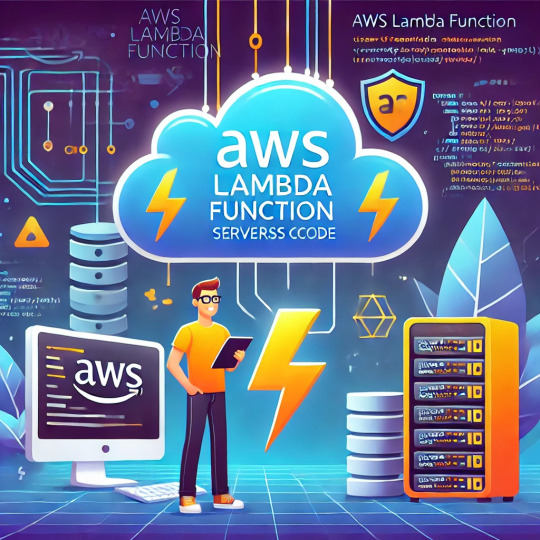
In recent years, serverless computing has become one of the most transformative trends in cloud computing. AWS Lambda, Amazon Web Services’ serverless compute service, has emerged as one of the key tools for building scalable, event-driven applications without the need to manage servers. In this post, we’ll walk through a real-world example of using AWS Lambda for serverless computing, highlighting the key benefits and how you can use Lambda to simplify your infrastructure.
What is AWS Lambda?
AWS Lambda is a compute service that allows you to run code without provisioning or managing servers. You upload your code (usually as a function), set the trigger, and Lambda takes care of everything else—auto-scaling, high availability, and even fault tolerance. This makes it an ideal solution for building microservices, processing data streams, automating tasks, and more.
Real-World Example: Building an Image Resizing Service
Let’s dive into a practical example of how AWS Lambda can be used to build a serverless image resizing service. Suppose you run a website where users upload images, and you want to automatically resize these images for different use cases—like thumbnails, profile pictures, and full-size versions.
Step 1: Create an S3 Bucket for Image Storage
The first step is to create an Amazon S3 bucket, where users will upload their images. S3 is an object storage service that is highly scalable and integrates seamlessly with AWS Lambda.
Step 2: Create the Lambda Function
Next, you’ll create a Lambda function that performs the image resizing. The code for this function is typically written in Python, Node.js, or another supported runtime. Here's an example Python function that resizes an image using the Pillow library:
import boto3
from PIL import Image
import io
s3 = boto3.client('s3')
def lambda_handler(event, context):
# Get the S3 bucket and object key from the event
bucket_name = event['Records'][0]['s3']['bucket']['name']
object_key = event['Records'][0]['s3']['object']['key']
# Download the image file from S3
img_obj = s3.get_object(Bucket=bucket_name, Key=object_key)
img_data = img_obj['Body'].read()
img = Image.open(io.BytesIO(img_data))
# Resize the image
img_resized = img.resize((128, 128)) # Resize to 128x128 pixels
# Save the resized image back to S3
out_key = f"resized/{object_key}"
out_buffer = io.BytesIO()
img_resized.save(out_buffer, 'JPEG')
out_buffer.seek(0)
s3.put_object(Bucket=bucket_name, Key=out_key, Body=out_buffer)
return {'statusCode': 200, 'body': 'Image resized successfully'}
This function does the following:
Downloads the uploaded image from the S3 bucket.
Resizes the image to 128x128 pixels.
Uploads the resized image back to the S3 bucket under a new path (e.g., resized/{object_key}).
Step 3: Set Up an S3 Event Trigger
AWS Lambda works seamlessly with other AWS services, like S3. To automate the image resizing process, you can set up an S3 event notification that triggers your Lambda function every time a new image is uploaded to the bucket. This is configured within the S3 console by adding an event notification that calls your Lambda function when an object is created.
Step 4: Testing the Lambda Function
Now that the Lambda function is set up and triggered by S3 events, you can test it by uploading an image to the S3 bucket. Once the image is uploaded, Lambda will automatically process the image, resize it, and store it in the designated S3 path.
Step 5: Monitor and Scale Automatically
One of the biggest advantages of using AWS Lambda is that you don’t have to worry about scaling. Lambda automatically scales to handle the volume of events, and you only pay for the compute time you use (in terms of requests and execution duration). AWS also provides monitoring and logging via Amazon CloudWatch, so you can easily track the performance of your Lambda function and troubleshoot if needed.
Key Benefits of Using AWS Lambda for Serverless Computing
Cost Efficiency: With AWS Lambda, you only pay for the execution time, meaning you don’t incur costs for idle resources. This is ideal for applications with variable or unpredictable workloads.
Auto-Scaling: Lambda automatically scales to handle an increasing number of events, without needing you to manually adjust infrastructure. This makes it well-suited for burst workloads, like processing thousands of images uploaded in a short period.
No Server Management: You don’t need to manage the underlying infrastructure. AWS handles provisioning, patching, and scaling of the servers, allowing you to focus on your code and business logic.
Event-Driven: Lambda integrates with many AWS services like S3, DynamoDB, SNS, and API Gateway, enabling you to build event-driven architectures without complex setups.
Quick Deployment: With Lambda, you can deploy your application faster, as there’s no need to worry about provisioning servers, load balancing, or scaling. Upload your code, set the trigger, and it’s ready to go.
Conclusion
AWS Lambda simplifies serverless application development by removing the need to manage infrastructure and enabling automatic scaling based on demand. In our image resizing example, Lambda not only reduces the complexity of managing servers but also makes the application more cost-effective and scalable. Whether you’re building a microservice, automating tasks, or handling real-time data streams, AWS Lambda is a powerful tool that can help you develop modern, cloud-native applications with ease.
By embracing serverless computing with AWS Lambda, you can build highly scalable, efficient, and cost-effective applications that are ideal for today's fast-paced, cloud-driven world.
To know more about AWS Lambda Enroll Now:
AWS Training In Chennai
AWS Course In Chennai
AWS Certification Training In Chennai
0 notes
Text
Building Machine Learning Models with Python: A Quick Start Guide

Python has emerged as the go-to programming language for machine learning (ML) due to its simplicity, vast libraries, and supportive community. Whether you are a beginner or an experienced programmer, this guide will help you take your first steps in building ML models with Python.
Step 1: Understanding Machine Learning Basics
Machine learning is a subset of artificial intelligence that enables computers to learn from data and make predictions or decisions. Models are built using algorithms that identify patterns in the data. The two main types of ML are:
Supervised Learning: Predicting outcomes using labeled data.
Unsupervised Learning: Finding patterns in data without predefined labels.
Step 2: Setting Up Your Environment
Before you dive into coding, set up your Python environment:
Install Python: Download and install Python 3.x from python.org.
Install Libraries:
Use pip to install essential ML libraries:
codepip install numpy pandas matplotlib seaborn scikit-learn
For deep learning models, consider libraries like TensorFlow or PyTorch.
Step 3: Preparing Your Dataset
Data preparation is a critical step in ML. Follow these steps:
Load Data: Use Pandas to load datasets from CSV, Excel, or databases:
import pandas as pd data = pd.read_csv('data.csv')
Explore Data: Understand its structure using methods like head(), info(), and describe().
Clean Data: Handle missing values, remove duplicates, and fix inconsistencies.
Feature Engineering: Transform raw data into meaningful features for the model.
Step 4: Building a Machine Learning Model
Here’s a simple workflow to build a supervised ML model using Scikit-learn:
Import Libraries:
from sklearn.model_selection import train_test_split from sklearn.ensemble import RandomForestClassifier from sklearn.metrics import accuracy_score
Split Data:
X = data.drop('target', axis=1) # Features y = data['target'] # Target variable X_train, X_test, y_train, y_test = train_test_split(X, y, test_size=0.2, random_state=42)
Train Model:
model = RandomForestClassifier() model.fit(X_train, y_train)
Evaluate Model:
predictions = model.predict(X_test) accuracy = accuracy_score(y_test, predictions) print(f'Accuracy: {accuracy}')
Step 5: Visualizing and Improving the Model
Visualize Results: Use Matplotlib or Seaborn to visualize data and predictions:
import matplotlib.pyplot as plt plt.scatter(y_test, predictions) plt.xlabel('Actual') plt.ylabel('Predicted') plt.show()
Optimize Hyperparameters: Use GridSearchCV or RandomizedSearchCV to fine-tune your model parameters.
Step 6: Deploying Your Model
Once your model performs well, deploy it using frameworks like Flask or Django to create a web app, or use cloud platforms like AWS, GCP, or Azure for large-scale deployments.
Conclusion
Building ML models with Python is both exciting and accessible. By following this guide, you can create a simple model, evaluate its performance, and prepare for more advanced projects. As you progress, explore different algorithms, datasets, and tools to deepen your understanding. Remember, the key to mastering machine learning is continuous practice and experimentation.
Are you ready to build your first machine learning model? Start today and let Python guide your way to becoming a machine learning expert!
To Know more detail:
Python training in chennai
Data science training in chennai
0 notes
Text
Why Learn MEAN Stack? Career Opportunities and Market Demand in 2024
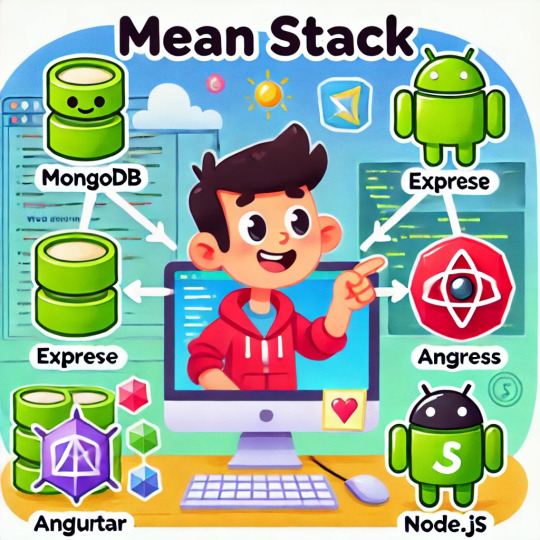
As technology continues to evolve, the demand for versatile web development skills has never been higher. One of the most popular and efficient technologies in full-stack development is the MEAN stack, a collection of JavaScript-based technologies — MongoDB, Express.js, Angular, and Node.js. MEAN stack has gained widespread popularity among companies and developers alike due to its flexibility, scalability, and performance. Let’s explore why learning MEAN stack is a wise career move in 2024 and the exciting opportunities it offers.
1. High Demand for Full-Stack Developers
With businesses striving to create seamless digital experiences, full-stack developers have become indispensable in the job market. MEAN stack developers are highly sought after as they can manage both front-end and back-end development. This holistic skill set saves companies time and resources, making MEAN developers valuable assets.
2. JavaScript Dominance Across the Stack
One of MEAN stack’s primary advantages is that it’s built entirely on JavaScript, one of the most popular and versatile programming languages. By learning MEAN stack, you don’t need to juggle multiple languages, as JavaScript works across the entire stack, from server-side to client-side. This unified language approach boosts productivity, allowing you to build applications faster and more efficiently.
3. Flexibility and Scalability for Modern Web Apps
MEAN stack is perfect for developing scalable and high-performance web applications. MongoDB, a NoSQL database, enables easy scaling and handles large amounts of data effectively, making it ideal for real-time applications and data-heavy platforms. Node.js and Express.js work together to create fast, non-blocking server-side environments, while Angular provides a robust, interactive client-side experience. Together, these technologies make MEAN stack a powerful choice for modern, dynamic applications.
4. Wide Range of Career Opportunities
The MEAN stack opens up various career paths, from junior full-stack developer roles to senior software engineering positions. Companies across sectors, including e-commerce, finance, healthcare, and tech, seek MEAN stack developers to create and maintain complex applications. As a MEAN stack developer, you can pursue roles such as Full-Stack Developer, Back-End Developer, MEAN Stack Architect, and more, with competitive salaries and growth potential.
5. Opportunities in Freelancing and Remote Work
The global shift towards remote work has increased opportunities for freelancers and contract workers. MEAN stack skills are highly valued in the freelance market, enabling developers to work flexibly on various projects, from startups to large-scale enterprises. The ability to handle both front-end and back-end development also makes MEAN stack developers ideal for remote and freelance positions, allowing them to manage entire projects independently.
6. Future-Ready with Open-Source and Community Support
MEAN stack’s open-source nature means it benefits from continuous improvements and a robust support community. Developers can leverage numerous libraries, frameworks, and tools created by the MEAN stack community to enhance their projects. As these technologies evolve, so will your skills, keeping you relevant and adaptable in the ever-changing tech landscape.
7. Conclusion: A Smart Investment in Your Career
In 2024, learning the MEAN stack is a strategic investment for anyone interested in full-stack development. With the ever-growing demand for versatile, skilled developers, MEAN stack expertise offers a strong foundation and a wide range of opportunities. Whether you're seeking stability, career growth, or the freedom to work remotely, MEAN stack development is a valuable path to explore.
#MEAN Stack training in chennai#mean stack development#full stack developer#full stack course in chennai
0 notes
Text
Data Science vs. Machine Learning vs. Artificial Intelligence: What’s the Difference?

In today’s tech-driven world, terms like Data Science, Machine Learning (ML), and Artificial Intelligence (AI) are often used interchangeably. However, each plays a unique role in technology and has a distinct scope and purpose. Understanding these differences is essential to see how each contributes to business and society. Here’s a breakdown of what sets them apart and how they work together.
What is Artificial Intelligence?
Artificial Intelligence (AI) is the broadest concept among the three, referring to machines designed to mimic human intelligence. AI involves systems that can perform tasks usually requiring human intelligence, such as reasoning, problem-solving, and understanding language. AI is often divided into two categories:
Narrow AI: Specialized to perform specific tasks, like virtual assistants (e.g., Siri) and facial recognition software.
General AI: A theoretical form of AI that could understand, learn, and apply intelligence to multiple areas, similar to human intelligence. General AI remains largely a goal for future developments.
Examples of AI Applications:
Chatbots that can answer questions and hold simple conversations.
Self-driving cars using computer vision and decision-making algorithms.
What is Data Science?
Data Science is the discipline of extracting insights from large volumes of data. It involves collecting, processing, and analyzing data to find patterns and insights that drive informed decisions. Data scientists use various techniques from statistics, data engineering, and domain expertise to understand data and predict future trends.
Data Science uses tools like SQL for data handling, Python and R for data analysis, and visualization tools like Tableau. It encompasses a broad scope, including everything from data cleaning and wrangling to modeling and presenting insights.
Examples of Data Science Applications:
E-commerce companies use data science to recommend products based on browsing behavior.
Financial institutions use it for fraud detection and credit scoring.
What is Machine Learning?
Machine Learning (ML) is a subset of AI that enables systems to learn from data and improve their accuracy over time without being explicitly programmed. ML models analyze historical data to make predictions or decisions. Unlike traditional programming, where a programmer provides rules, ML systems create their own rules by learning from data.
ML is classified into different types:
Supervised Learning: Where models learn from labeled data (e.g., predicting house prices based on features like location and size).
Unsupervised Learning: Where models find patterns in unlabeled data (e.g., customer segmentation).
Reinforcement Learning: Where models learn by interacting with their environment, receiving rewards or penalties (e.g., game-playing AI).
Examples of Machine Learning Applications:
Email providers use ML to detect and filter spam.
Streaming services use ML to recommend shows and movies based on viewing history.
How Do They Work Together?
While these fields are distinct, they often intersect. For example, data scientists may use machine learning algorithms to build predictive models, which in turn are part of larger AI systems.
To illustrate, consider a fraud detection system in banking:
Data Science helps gather and prepare the data, exploring patterns that might indicate fraudulent behavior.
Machine Learning builds and trains the model to recognize patterns and flag potentially fraudulent transactions.
AI integrates this ML model into an automated system that monitors transactions, making real-time decisions without human intervention.
Conclusion
Data Science, Machine Learning, and Artificial Intelligence are closely related but have unique roles. Data Science is the broad field of analyzing data for insights. Machine Learning, a branch of AI, focuses on algorithms that learn from data. AI, the most comprehensive concept, involves creating systems that exhibit intelligent behavior. Together, they are transforming industries, powering applications from recommendation systems to autonomous vehicles, and pushing the boundaries of what technology can achieve.
If you know more about details click here.
0 notes
Text
Essential Skills Every Data Analyst Should Have

In today’s data-driven world, businesses rely heavily on data analysts to translate raw data into actionable insights. For aspiring data analysts, developing the right skills is crucial to unlocking success in this field. Here’s a look at some of the essential skills every data analyst should master.
1. Statistical Knowledge
A strong understanding of statistics forms the foundation of data analytics. Concepts like probability, hypothesis testing, and regression are crucial for analyzing data and drawing accurate conclusions. With these skills, data analysts can identify patterns, make predictions, and validate their findings with statistical rigor.
2. Data Cleaning and Preparation
Data rarely comes in a ready-to-use format. Data analysts must clean and preprocess datasets, handling issues like missing values, duplicate entries, and inconsistencies. Mastering tools like Excel, SQL, or Python libraries (Pandas and Numpy) can make this process efficient, allowing analysts to work with accurate data that’s primed for analysis.
3. Proficiency in SQL
SQL (Structured Query Language) is the backbone of data retrieval. Analysts use SQL to query databases, join tables, and extract necessary information efficiently. Whether working with MySQL, PostgreSQL, or Oracle, SQL is an indispensable tool for interacting with large datasets stored in relational databases.
4. Data Visualization Skills
Communicating insights effectively is just as important as finding them. Data analysts must be skilled in visualizing data through charts, graphs, and dashboards. Tools like Tableau, Power BI, and Matplotlib in Python help turn data into easy-to-understand visuals that drive informed decision-making.
5. Programming Languages: Python & R
Python and R are highly valued in data analytics due to their flexibility and extensive libraries for data manipulation and analysis. Python, with libraries like Pandas, Seaborn, and Scikit-learn, is versatile for both data preparation and machine learning tasks. R is often used for statistical analysis and visualizations, making both valuable in an analyst’s toolkit.
6. Critical Thinking and Problem-Solving
A data analyst’s role goes beyond number-crunching. They need to ask the right questions, approach problems logically, and identify patterns or trends that lead to strategic insights. Critical thinking allows analysts to explore data from multiple angles, ensuring they uncover valuable information that can impact business decisions.
7. Attention to Detail
Data analytics requires precision and accuracy. Even a small error in data handling or analysis can lead to misleading insights. Attention to detail ensures that data is correctly interpreted and visualized, resulting in reliable outcomes for the business.
8. Domain Knowledge
While technical skills are essential, understanding the industry context adds depth to analysis. Whether it’s finance, healthcare, marketing, or retail, domain knowledge helps analysts interpret data meaningfully, translating numbers into insights that matter for specific business needs.
9. Communication Skills
Once the data is analyzed, the findings must be communicated to stakeholders clearly. Analysts should be skilled in explaining complex data concepts to non-technical team members, using both visual aids and concise language to ensure clarity.
As data analytics grows, so does the need for well-rounded analysts who can handle data from start to finish. By mastering these essential skills, aspiring data analysts can become valuable assets, capable of transforming data into insights that drive business success.
Looking to build a career in data analytics? Code From Basics offers comprehensive training to equip you with these essential skills. Know more about our Data Analytics program.
0 notes
Text
Error Handling in Python: Try, Except, and More
Python, like many programming languages, uses error handling to catch and manage exceptions, preventing your programs from crashing. By implementing proper error handling, you can ensure smoother user experiences and more maintainable code. In this blog, we will dive into the basics of handling errors in Python using the try, except, finally, and else blocks.

Basics of Error Handling in Python
Errors or exceptions in Python come in many forms: ValueError, ZeroDivisionError, FileNotFoundError, etc. The simplest way to handle these errors is by using a try and except block.
try:
x = 10 / 0
except ZeroDivisionError:
print("You can't divide by zero!")
In this example, the code inside the try block attempts to divide by zero, which would normally cause a crash. However, with except, the program catches the ZeroDivisionError and prints a user-friendly message.
Multiple Exceptions
You can handle multiple exceptions by specifying them in the except block or by using separate blocks.
try:
x = int(input("Enter a number: "))
result = 10 / x
except ValueError:
print("You must enter a valid number!")
except ZeroDivisionError:
print("You can't divide by zero!")
Here, if the user enters something that is not a number, the ValueError will be caught. If they enter zero, the ZeroDivisionError will be caught. Multiple except blocks allow for more granular error handling.
Using else and finally
Python allows for even more control using else and finally. The else block executes only if no exceptions are raised, while the finally block always runs, regardless of whether an exception occurs.
try:
file = open('data.txt', 'r')
content = file.read()
except FileNotFoundError:
print("The file does not exist.")
else:
print("File read successfully!")
finally:
print("Closing file.")
file.close()
In this example, the else block runs if no exception occurs during file opening and reading. Regardless of the outcome, the finally block ensures that the file is closed.
Custom Exceptions
You can also define your own exceptions by subclassing Python’s built-in Exception class. This is useful when you need more specific error reporting for custom scenarios.
class NegativeNumberError(Exception):
pass
def check_positive(number):
if number < 0:
raise NegativeNumberError("Negative numbers are not allowed!")
In this case, a custom exception is raised if the number is negative, offering precise control over error conditions.
Conclusion
Error handling is a critical part of Python programming, making your code robust and user-friendly. By mastering try, except, else, and finally, you can prevent unexpected crashes and create a smoother user experience.
Want to learn more about Python? Enroll in our Python for Beginners course now and master error handling, data structures, and more!
0 notes
Text
Why Data Analytics is the Future of Decision-Making in Business

In today’s fast-paced business world, decision-making can no longer rely solely on intuition or guesswork. Instead, data-driven insights have become the cornerstone for success, transforming how businesses operate, strategize, and compete. Data analytics is at the forefront of this revolution, helping organizations make smarter, faster, and more accurate decisions.
1. Unlocking Actionable Insights from Big Data
With the exponential growth of data, businesses now have access to vast amounts of information about their operations, customers, and competitors. However, without the proper tools, this data remains untapped potential. Data analytics converts raw data into actionable insights by identifying trends, patterns, and opportunities that would otherwise go unnoticed. From customer preferences to market shifts, businesses can now make informed decisions based on evidence rather than assumptions.
2. Enhancing Operational Efficiency
Data analytics doesn’t just improve decision-making at the strategic level; it also enhances day-to-day operations. By analyzing workflows, employee performance, and resource allocation, businesses can optimize processes to save time and reduce costs. Predictive analytics can even foresee potential challenges, enabling companies to take proactive measures before issues arise.
3. Personalizing Customer Experiences
Understanding customer behavior is crucial for delivering personalized experiences that drive loyalty and satisfaction. Data analytics allows businesses to delve deep into customer data, analyzing purchasing habits, preferences, and feedback. With this knowledge, businesses can tailor their products, services, and marketing campaigns to meet customer needs, fostering stronger relationships and boosting revenue.
4. Supporting Risk Management and Compliance
Every business faces risks, whether from market volatility, regulatory changes, or internal inefficiencies. Data analytics helps mitigate these risks by providing real-time insights and predictive models. Companies can identify areas of vulnerability and take corrective actions before they become major issues. Additionally, data analytics aids in ensuring compliance by tracking relevant regulations and industry standards.
5. Driving Innovation and Competitive Advantage
Businesses that leverage data analytics effectively are positioned to stay ahead of the competition. Data-driven decision-making encourages innovation, as it allows companies to test new ideas and solutions based on quantifiable evidence. By staying agile and responsive to market changes, businesses can adapt faster and seize new opportunities, ensuring long-term growth and success.
Conclusion: The Future of Business is Data-Driven
The importance of data analytics in business decision-making will only continue to grow as more companies recognize its potential. As industries become more complex and competitive, leveraging data analytics is no longer a choice—it’s a necessity. Organizations that harness the power of data will be able to make more informed decisions, improve efficiency, and ultimately gain a competitive edge.
Ready to unlock the full potential of data analytics for your business? Enroll in our Data Analyst Course at Code From Basics and gain the skills needed to master data-driven decision-making. Whether you’re looking to improve operations, enhance customer experiences, or stay ahead of the competition, our comprehensive training will prepare you for the future of business.
0 notes